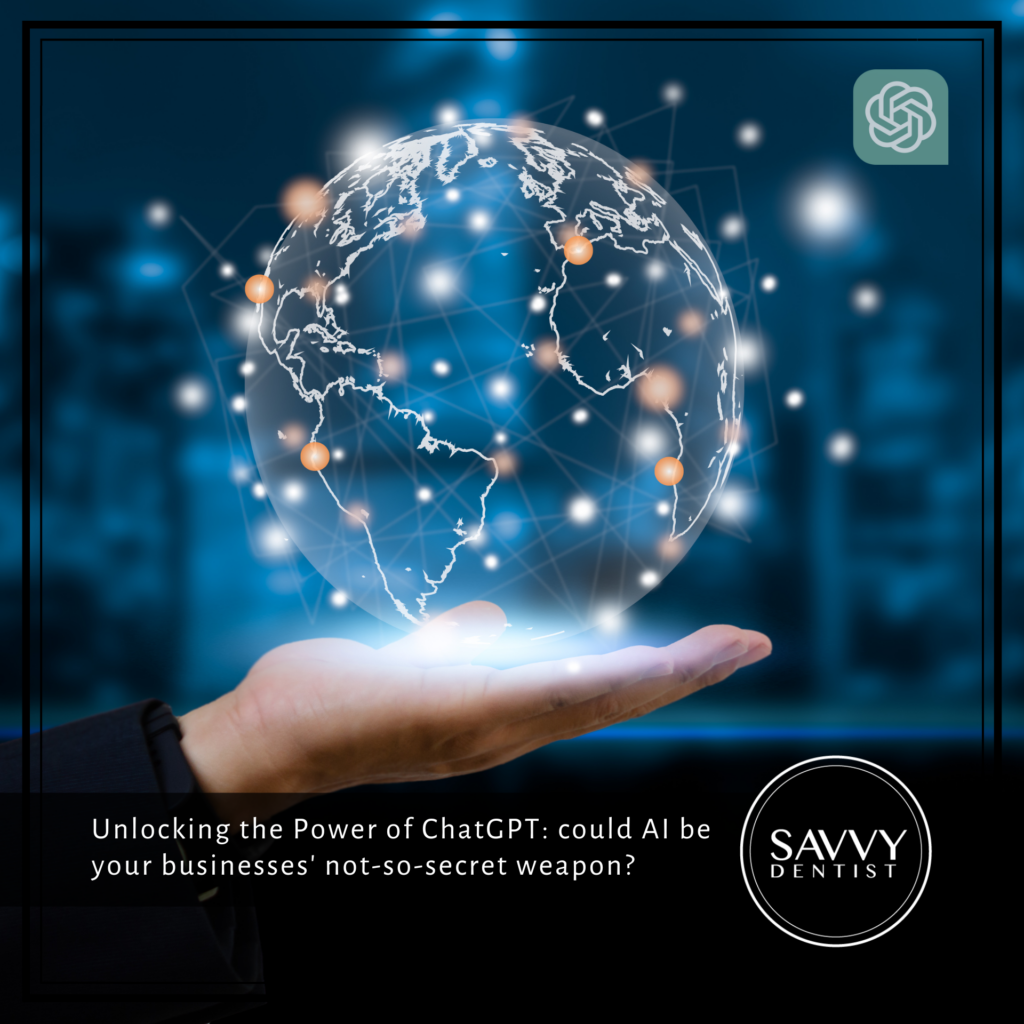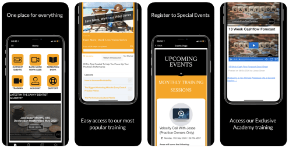If you’ve managed to access the internet and/or social media in the past six months and not hear about the rise of AI and ChatGPT – then you surely deserve some kind of award.
Once the stuff of science fiction and doomsday predictions, Artificial Intelligence is here and it’s here to stay.
The pursuit of AI can be traced back to as early as 1950 when Alan Turing published his trailblazing paper “Computing Machinery and Intelligence” (Harvard, 2017).
Since then, mathematicians and software engineers have worked to answer the million-dollar question – can machines think?
The past decade in particular has seen formidable progress in the development of AI and human-like technologies. We were given auto-correct, Siri, Google Maps, driverless cars, smart-homes, and chatbots that infuriated us on Telstra’s website.
But up until recently, AI and predictive technologies were mostly the realm of entrepreneurs, Silicone Valley start-ups, futurists, and the particularly tech-savvy.
Today, AI technologies (and Chat GPT in particular) have exploded as a tool for business owners, marketers, freelancers, and anyone concerned with running a business on a budget.
But this of course begs the question, what opportunities does AI present? And what risks might be lurking below the shiny new surface?
A Beginners Guide to AI
Encyclopaedia Britannica defines AI as “the ability of a digital computer or computer-controlled robot to perform tasks commonly associated with intelligent beings. The term is frequently applied to the project of developing systems endowed with the intellectual processes characteristic of humans, such as the ability to reason, discover meaning, generalize, or learn from past experience.”
This definition might conjure up images of self-aware machines or robots with feelings (think Wall-E or Blade Runner), but AI is far less dramatic and far more pervasive than that.
Predictive text when you use Google Search? That’s AI.
Face ID to unlock your phone? That too.
Social media algorithms, Grammarly, Amazon recommendations, even Netflix – all examples of how we already use AI on a daily basis.
In fact, according to Grandview Research, the global artificial intelligence market was valued as USD 136.55 billion in 2022.
An article from TechJury also showed that AI adoption is growing steadily and now sits at 35% (a four-point increase from 2021), whilst IBM reports that 77% of surveyed business are already using or plan to use AI in 2023.
So, if AI has been around for years, then what’s all the recent hype about?
A culmination of many things (it’s more topical in the wake of Bitcoin and the Metaverse), but there is one recent invention on everyone’s lips…
ChatGPT is a new technology that’s making waves for its ability to generate particularly versatile and reasonably specific text.
It was developed by a company called OpenAI (a Silicon Valley start-up Elon Musk is involved with) and was first made available November 2022.
Since launching, ChatGPT has been used over 30 million times and gets approximately 5 million visits each day, according to the New York Times.
It has been able to:
- Pass an MBA exam
- Write and debug computer code
- Conduct makeshift therapy sessions
It’s clearly an impressive technology but has been met with its fair share of controversy for both the opportunities and threats it poses.
What opportunities does Chat GPT present?
One of the key benefits of Chat GPT is that it’s able to create copy on virtually any topic, and in any specified tone.
It has been built with limitations around graphic, violent, or highly offensive content – but beyond that it can generate more or less anything.
Business owners and marketers have been quick to put the technology to work creating blog posts, emails, and social media posts.
This is particularly exciting for smaller operations who don’t have the resources to hire professional writers or a large marketing team.
As you’ll see, Chat GPT also allows you to refresh the content multiple times until it hits the nail on the head.
ChatGPT sounds like a wonder machine – so why would there be any downsides?
Well, no machine is infallible.
In fact, I asked ChatGPT itself to explain its own shortcomings.
It responded:
“As an AI language model, Chat GPT has been subject to various criticisms and risks. Some of the most common ones include:
Bias: Language models like Chat GPT are trained on large amounts of text data, and if that data is biased, the model may also exhibit biases in its responses. This can result in the model producing inappropriate or offensive responses, particularly on sensitive topics like race, gender, and sexuality.
Lack of understanding: While Chat GPT can generate text that is coherent and grammatically correct, it may not always understand the context or meaning of what it is generating. This can result in the model producing irrelevant or nonsensical responses.
Misinformation: Chat GPT can generate responses that are factually incorrect or misleading if it is trained on inaccurate or biased data.
Overreliance: There is a risk that people may become too reliant on Chat GPT or other language models for generating text, which could lead to a decline in critical thinking skills and the ability to write effectively.
Security: Language models like Chat GPT can also be vulnerable to security threats such as adversarial attacks or data breaches. For example, a malicious actor could train a language model to generate spam or phishing messages.
Lack of transparency: Some have criticized the lack of transparency in how language models like Chat GPT are trained and the algorithms they use. This can make it difficult to understand how the model is generating its responses and can contribute to concerns around bias and misinformation.
Privacy: There are concerns about the privacy implications of language models like Chat GPT, particularly if they are used to generate text based on sensitive user data. This could potentially lead to the exposure of personal information or other privacy violations.
Overall, while Chat GPT and other language models have shown great promise in generating human-like text, they also come with a number of risks and criticisms that need to be carefully considered and addressed.”
And while this is an impressive list straight from the horses’ mouth, there have been additional issues flagged by users.
Extended Risks Associated with Chat GPT
Plagiarism is set to be one of the biggest apprehensions around ChatGPT. Schools and larger workplaces are already implementing systems that can detect AI-generated text and flag it as plagiarism.
Inaccuracy is another key concern. We all know the internet is rife with misinformation and opinions – which ChatGPT might not be able to accurately detect. When the AI scans the internet for information to inform its content, there’s always the risk that it’s drawing from an inaccurate source.
To combat the hesitations around plagiarism and inaccuracy, software is already adapting to respond to AI generated content.
Google have advised that publishers should disclose the use of AI in creating content, along with Who, How, and Why. At this stage it is not overtly penalising AI generated writing, but if it’s thought to be created with the intent of manipulating rankings, then it will be penalised by Google.
Software engineers have also rolled out a series of web pages and Chrome Extensions that are able to detect whether writing has been generated by AI. Those who are vehemently against ChatGPT will now have the tools to identify and block the content if they so choose, much like an Ad Blocker works.
And one of the more significant concerns includes cyber security. ChatGPT itself has flagged it as an issue, but cyber security remains a growing concern for individuals and businesses worldwide. Like any technology we use, a data breach could see your data compromised and subject to cyber threats.
Can the concerns be addressed so we can use Chat GPT responsibly?
The most obvious solution is to review, review, review the content.
Contrary to popular belief, machines aren’t infallible and are all but bound to make mistakes from time to time.
It also makes sense that if your copy is going to be read and consumed by humans, it needs to be proofed, edited, and approved by a human.
You’ll know the context of your content far better than any machine, including the context, audience, potential sensitivities, and the platforms it will be promoted on.
Chat GPT and AI technologies can create a solid foundation, but they still need a human touch at this stage.
A great example is Canva and the way we as business owners use their technologies. They provide the templates and the tools, and then we jump in and tweak it so that it makes sense for our brand and our audience.
Another important user tip is to give ChatGPT plenty of direction. The more vague you are, the more waffling and scanning the internet it’s bound to do. Feel free to add links or examples of previous work that you want to emulate, so that it can pick up on specific information and tone of voice.
So, is ChatGPT going to replace the need for writers?
It’s probably not going to make writers completely obsolete (which is good news for the estates of Hemmingway and Shakespeare).
But there’s no denying it’s an excellent tool that can be incorporated into your business, replace some human labour, and create a great jumping-off point.
There are absolutely times when a professional such as a copywriter, lawyer, or author are necessary, but overall, don’t be afraid of ChatGPT.
Businesses the world over are embracing AI chatbots as a must-have technology, and a tool in their marketing arsenal.
The leading AI right now, ChatGPT, is set to revolutionise the tech world, with its human-like responses, and is slated to become part of our every day. Try it for yourself!






